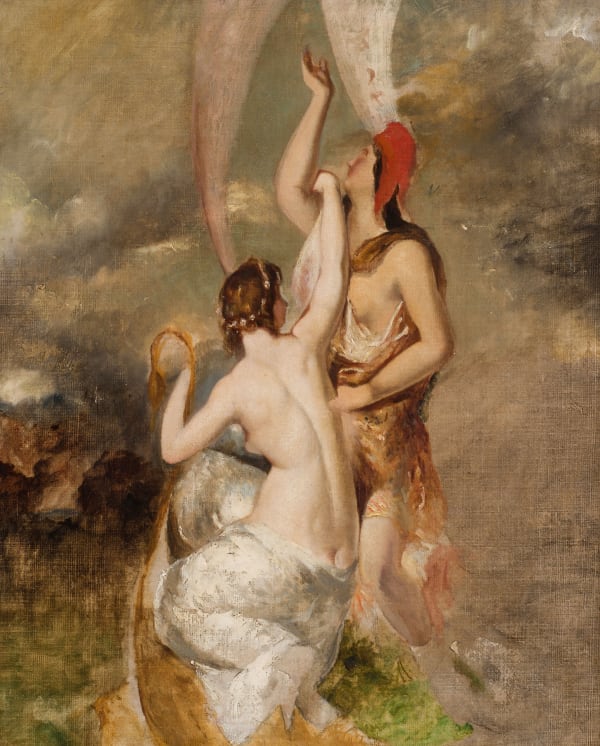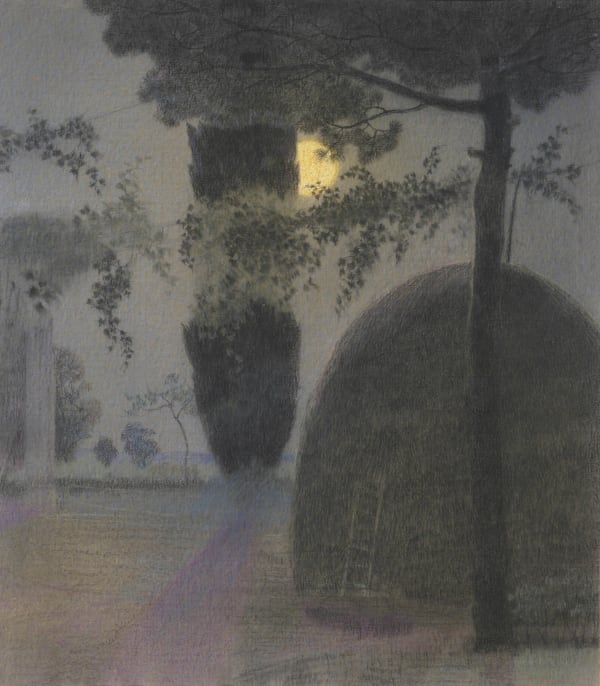
REMIGIO ANNOVATI
Remigio Annovati, son of the painter Amedeo Annovati, was born in Milan on 21 February 1914. He showed his work in a one-man exhibition at the Galleria Salvetti in Milan in 1942. He won second prize at a collective exhibition held at the Castello Sforzesco with his picture Loretana, while in 1954 he won the "Golden Paintbrush" award at the Giulianova Biennale in Abruzzo, where he had been showing his work on a regular basis since 1948. He died in Milan in 1977.
Annovati's work is clearly inspired by early 20th century Divisionism, a style in which his father Amadeo had also dabbled and with which Remigio was thus very familiar. The genre that he was to prefer throughout his artistic career was unquestionably landscape painting which, in the wake of such celebrated early 20th century figures as Gaetano Previati, Guido Marussing and Plinio Novellini, became for him an emotional subject, thus devoid of the naturalistic elements proper to it. In Annovati's work, the emotional atmosphere is chiefly a product of atmospheric luminosity and of the soft application of the colours of the vegetation, as we can for example in his Autumn, The Matterhorn, The Valle d'Aosta, First Light and White Cloud.
The Pearl, the painting under discussion here, continues to be technically consistent with the Divisionist poetic beloved of Annovati, but from a strictly iconographical viewpoint it adopts what we might call typically Symbolist stylistic features. The title harks back to the ancient theme of the pearl fisher, one of the earliest and best known instances of which is a Mannerist painting by Alessandro Allori entitled The Pearl Fishers in Palazzo Vecchio in Florence. Despite sharing the subject matter with Allori, however, Annovati's painting more closely reflects the vision common in the late 19th century, imbued with a lyricism that is effectively mirrored in the decadent poetry and Italian Symbolism typical of the début de siècle. The model from which Annovati may directly have drawn his inspiration for The Pearl is a painting entitled The Green Abyss by Giulio Aristide Sartorio, painted in 1900 and now in the Galleria d'Arte Moderna Ricci Oddi in Piacenza (inv. 332). The Green Abyss is a version with minor variations of another picture by Sartorio entitled The Mermaid (Rome, private collection) painted a few years earlier, in 1893.
After seeing Sartorio's work on display in 1895–6, Luigi Pirandello described it in intensely poetic terms: "A green wave forms an eddy, and in that eddy the pale Mermaid allows herself to be cradled, her tawny mane spread out, one arm immersed in the crystal clear water, the other resting languidly on her breast with alluring softness. At the top of the painting, a small boat turns to follow the wave; lying outstretched in the boat, an adolescent grasps the enchantress with an arm as she rises to the surface. The whole picture is boldly contained in this wave, and as you observe it you have the distinct impression that you are dreaming". The Green Abyss, which sits perfectly with the literary mood of the period as enshrined in the spirit of D'Annunzio, is a clear allegory of human instinct, where man, the possessor of strength and virility, is presented as a bundle of vibrant muscle, while woman is depicted as a delicate, fragile fulcrum of beauty and voluptuousness. This interpretation can be extended by virtue of the two pictures' stylistic and iconographical affinity to The Pearl, which also shares with Sartorio's work the use of complementary hues of green and red.
The Green Abyss was shown, along with a handful of drawings and preparatory studies, at the first retrospective of Sartorio's work, held at the Galleria Borghese in Rome in 1933 (see Calosso, 1933, p. 44). Annovati may well have visited the exhibition in Rome and been so enraptured by Sartorio's painting as to choose it as a source of inspiration for The Pearl, which can thus be dated to the mid-1930s not only on the strength of stylistic and iconographical considerations but also for that very reason.
Join the mailing list
Subscribe to our newsletter to receive all the news about exhibitions, fairs and new acquisitions!




